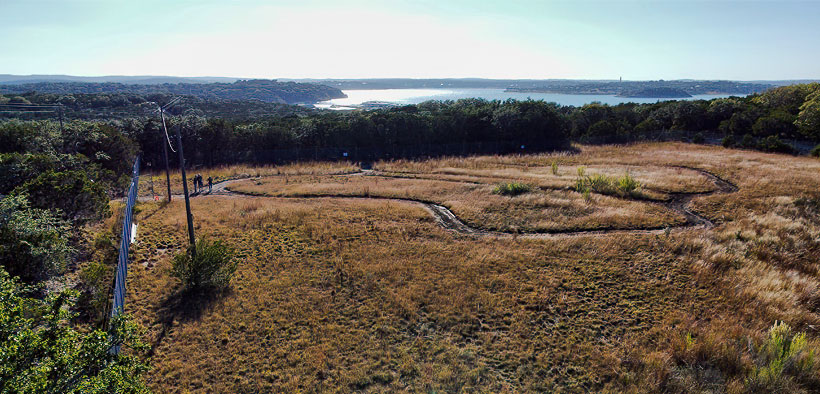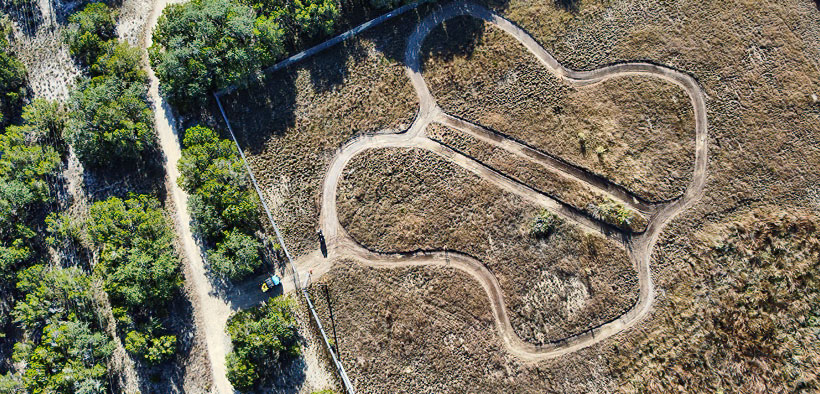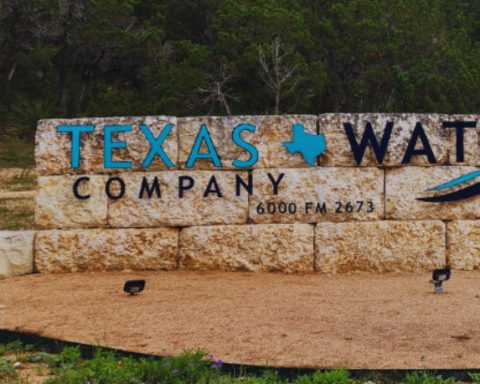Water Oriented Recreation District of Comal County (WORD) and the Lindheimer Chapter of the Texas Master Naturalists are turning an abandoned 1950s-era U.S. Army radar station inside Canyon Park into a spectacular pollinator garden for hikers and bikers on the Madrone Trail to enjoy.
WORD Manager Mike Dussere warns visitors it could take a year or two for this demonstration garden to blossom into something impressive.
The most visible clue something is happening at the site of the old “LORAN” installation, which is fenced, is a 200-foot by 200-foot gigantic butterfly-shaped trail WORD paid to have bulldozed into the ground.
The butterfly is so large that casual hikers will miss they’re even walking something deliberately shaped like an insect, said Susan Bogle, who is spearheading the project for Lindheimer Master Naturalists and oversees the Butterfly Garden at Canyon Lake’s Tye Preston Memorial Library, as well as the Habiscape located in Guadalupe River State Park.
That is, of course, until they run across the piles of rocks master naturalists will shape into an “antenna” for the gigantic butterfly. The butterfly trail will be mulched.
The most unmistakable sign something is happening near the park’s trailhead are the master naturalists working diligently and “arduously” to clear KR Bluestem, a nonnative grass, from the area.
Bogle said they’re leaving the native plants, which regrew naturally after the Army cleared its equipment out.
However, pollinator gardens are meant to support insects and birds that rely on them for food and shelter.
To make life easier for millions of moths, bees, wasps, hummingbirds, bats and other creatures, master naturalists are planting large beds, each containing the same native plants — just like they did at Tye Preston’s butterfly garden.
“It’s kind of like having a food court at the mall,” Bogle said. “It’s less energy they have to spend to get the nutrients they need…We’re providing food and shelter for insects at all stages, whether it’s an egg, caterpillar, chrysalis or actual adult of whatever the creature is.”
Master naturalists are digging up plants out of their own yards to use at the new garden, but Ace Hardware also is donating some plants and providing many others at cost.
Like all projects involving soil, water and plants, the garden will perpetually become a work-in-progress, Bogle said.
She’s not sure how long it will take for the garden to grow to an impressive size as there are too many variables involved but invites the public to walk the trail on a regular basis and watch nature do its thing.
Dussere said WORD will install an irrigation system and a bird blind as well inside the fenced area, whose entire footprint is 90,000-square-feet. The fence will protect plants from deer, who love Texas natives just as much as pollinators. The garden does not have a set opening date yet, and WORD will update the public once the project is nearly complete.
An area Sea Scout is building benches for the garden.
No opening date has been set — Dussere said he will update the public once the project is nearly complete.
The garden is just one improvement WORD has planned for Canyon and Comal parks, which it took over the management of from the U.S. Army Corps of Engineers in 2020.
Other areas inside Canyon Park are reopening for the first time in years, and WORD is preparing to break ground on a walking area inside Comal Park.
“We’re just trying to make them better even than they already are,” he said.
Bogle said the unique shape of the garden is the brainchild of former Texas Parks and Wildlife Department (TPWD) Ranger Craig Hensley, now with Texas Nature Trackers.
She invites the public to learn more at the 6 p.m. Thursday, Jan. 20 monthly Zoom meeting of the Lindheimer master naturalists, where she is the featured speaker. For more details, visit the Lindheimer Chapter Texas Master Naturalists Facebook page.
“Learn how this new garden came into being and how it will serve to attract the butterflies, bees and birds that are essential for pollination, as well as providing an example to both local citizens and visitors of how to attract pollinators with the proper utilization of native plants and garden design,” she said.






Even though the grand opening is not until Oct 20, is the garden open for walls at this time?
Don’t know — you will have to contact WORD or Lindheimer Master Naturalists.